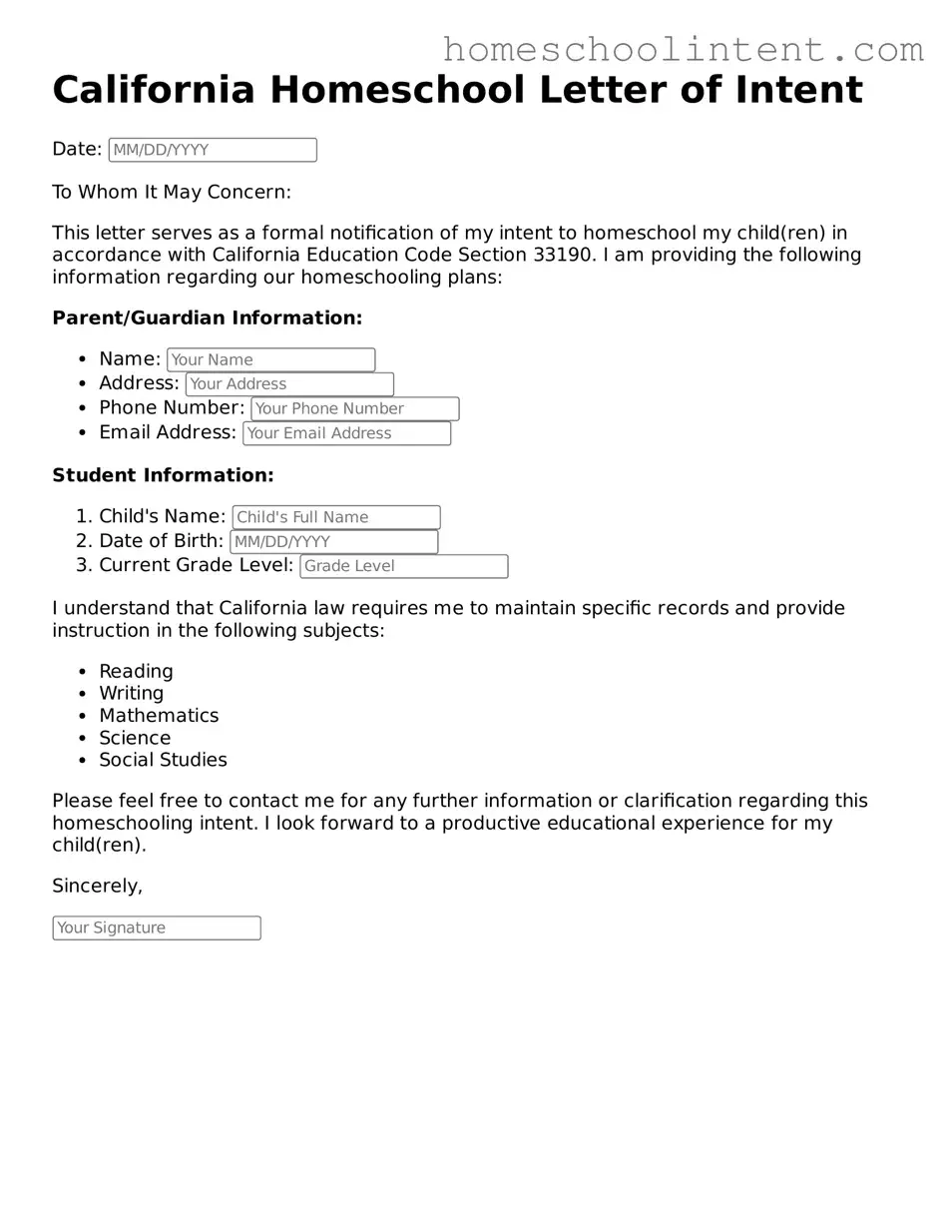Documents used along the form
When you decide to homeschool in California, the Homeschool Letter of Intent form is just the first step. Several other documents can help you navigate the homeschooling process effectively. Here’s a list of forms and documents you may find useful.
- Private School Affidavit (PSA): This form is filed annually to establish your homeschool as a private school. It provides legal recognition and ensures compliance with state laws.
- Curriculum Plan: A document outlining the subjects and materials you plan to use for your child's education. This helps you stay organized and focused on educational goals.
- Attendance Records: Keeping a log of your child's attendance is essential. It can be helpful for tracking progress and may be required for certain assessments.
- Progress Reports: Regular reports that detail your child's academic achievements and areas needing improvement. These can be useful for both you and your child to evaluate learning outcomes.
- Transcripts: A record of your child's courses, grades, and credits earned. This is particularly important if your child plans to apply to college or transfer to another school.
- Standardized Test Results: Many homeschooling families choose to have their children take standardized tests to assess academic progress. Keeping these results can provide valuable insights.
- IEP or 504 Plan (if applicable): If your child has special needs, these plans outline specific accommodations and services. They can guide your homeschooling approach to meet your child's unique requirements.
- Homeschooling Support Group Information: Joining a local or online homeschooling group can provide resources, support, and socialization opportunities for both you and your child.
By preparing these documents, you can ensure a smoother homeschooling experience in California. Each form plays a role in helping you stay organized and compliant with state regulations. Good luck on your homeschooling journey!
